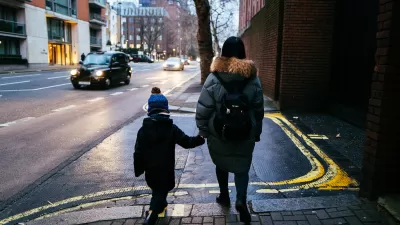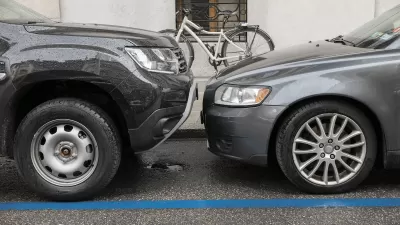A new study shows that modern safety features are more important than size and weight once vehicles weigh over 4,000 pounds.

The “bigger is safer” argument for large trucks and SUVs has reached a plateau, according to an analysis from the Insurance Institute for Highway Safety, which reveals that vehicles over 4,000 pounds don’t offer any significant safety benefits over lighter vehicles. For context, the average American car weighs 4,100 pounds, notes Kea Wilson in Streetsblog USA.
Although vehicle size and weight did, for a while, make a difference for safety, Wilson explains, “advances in other vehicle safety strategies like better front-end design and automatic emergency braking have increased the "crash compatibility" of average-sized vehicles, making the occupants of those cars more likely to survive being hit by the driver of a monster truck — though not necessarily sparing the lives of people outside cars when those drivers strike them.”
Meanwhile, safety continues to decrease for pedestrians and other people outside of the vehicles as vehicles get larger. Taller vehicles are more likely to strike people in the head or vital organs, while large cars and front ends can also obscure drivers’ visibility and perception of speed.
While Wilson acknowledges that “ regulators under President Trump are unlikely to mandate new safety updates to protect vulnerable road users,” many automakers are already voluntarily implementing changes, but pedestrian safety doesn’t always rank at the top of the upgrades list.
FULL STORY: Study: You’re Not That Much Safer In a 4,000+ Pound Car

Planetizen Federal Action Tracker
A weekly monitor of how Trump’s orders and actions are impacting planners and planning in America.

Chicago’s Ghost Rails
Just beneath the surface of the modern city lie the remnants of its expansive early 20th-century streetcar system.

San Antonio and Austin are Fusing Into one Massive Megaregion
The region spanning the two central Texas cities is growing fast, posing challenges for local infrastructure and water supplies.

Since Zion's Shuttles Went Electric “The Smog is Gone”
Visitors to Zion National Park can enjoy the canyon via the nation’s first fully electric park shuttle system.

Trump Distributing DOT Safety Funds at 1/10 Rate of Biden
Funds for Safe Streets and other transportation safety and equity programs are being held up by administrative reviews and conflicts with the Trump administration’s priorities.

German Cities Subsidize Taxis for Women Amid Wave of Violence
Free or low-cost taxi rides can help women navigate cities more safely, but critics say the programs don't address the root causes of violence against women.
Urban Design for Planners 1: Software Tools
This six-course series explores essential urban design concepts using open source software and equips planners with the tools they need to participate fully in the urban design process.
Planning for Universal Design
Learn the tools for implementing Universal Design in planning regulations.
planning NEXT
Appalachian Highlands Housing Partners
Mpact (founded as Rail~Volution)
City of Camden Redevelopment Agency
City of Astoria
City of Portland
City of Laramie





























